Traditional Orange Marmalade Recipe : without bitterness
Making orange marmalade without bitterness becomes an easy delight with this simple recipe.
Perfect for breakfast or desserts, it highlights the natural sweetness of oranges while removing their usual bitterness.
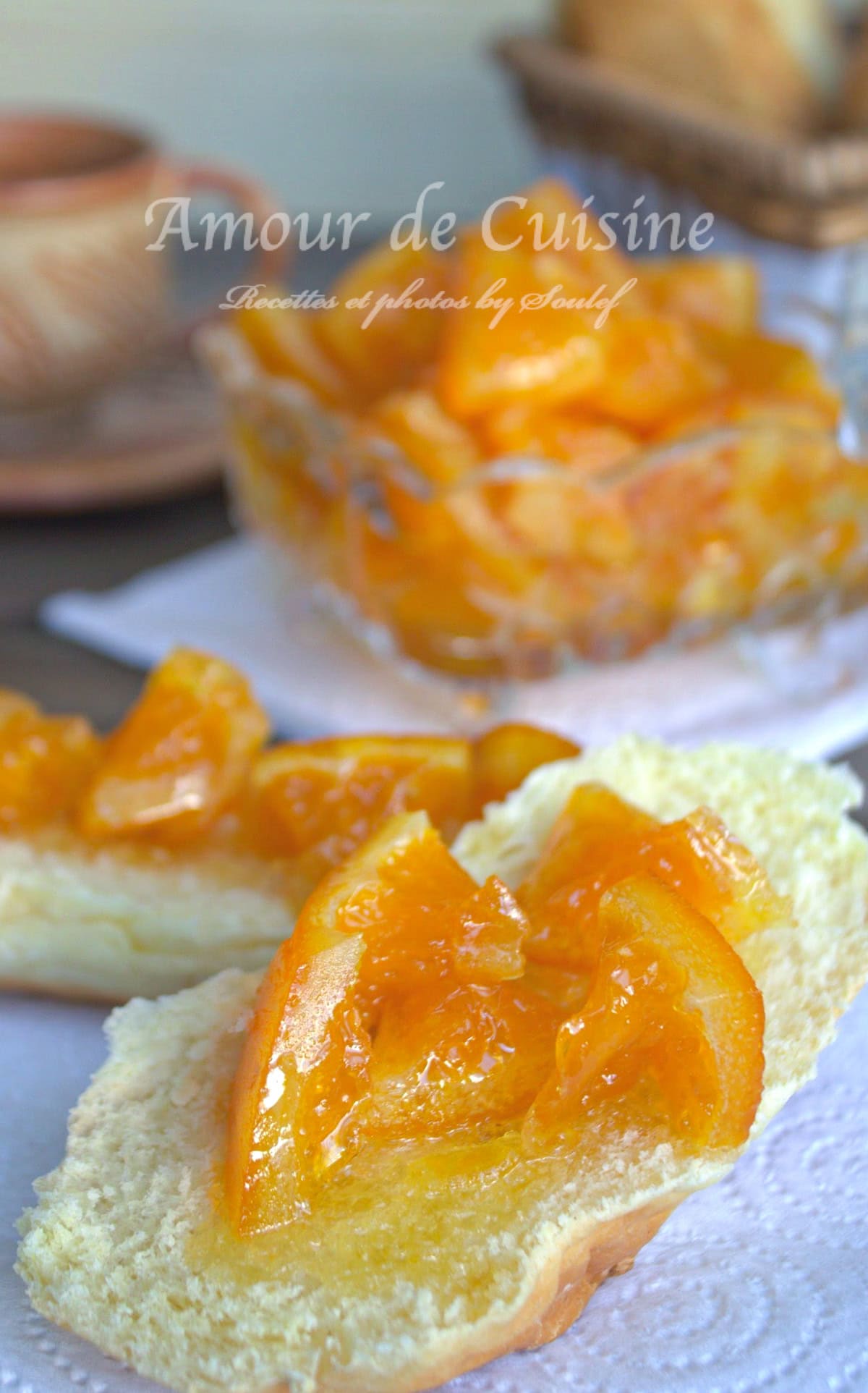
How to Make the Best Orange Marmalade (Sweet, Tangy, and Not Bitter)
This orange marmalade recipe, inspired by my grandmother’s time-honored method, is a true celebration of citrus at its best.
It captures the fresh, tangy flavour of ripe oranges while carefully removing the bitterness often found in traditional marmalades.
The result is a bright, sweet, and perfectly balanced spread that feels both nostalgic and comforting.
Whether enjoyed on warm toast at breakfast, paired with scones for an afternoon tea, or used as a thoughtful homemade gift, this marmalade adapts beautifully to any occasion.
Its rich texture, filled with tender pieces of orange peel, brings a delightful contrast in every bite.
Simple yet elegant, this recipe transforms everyday moments into something special, filling your kitchen with warmth, aroma, and timeless flavour.
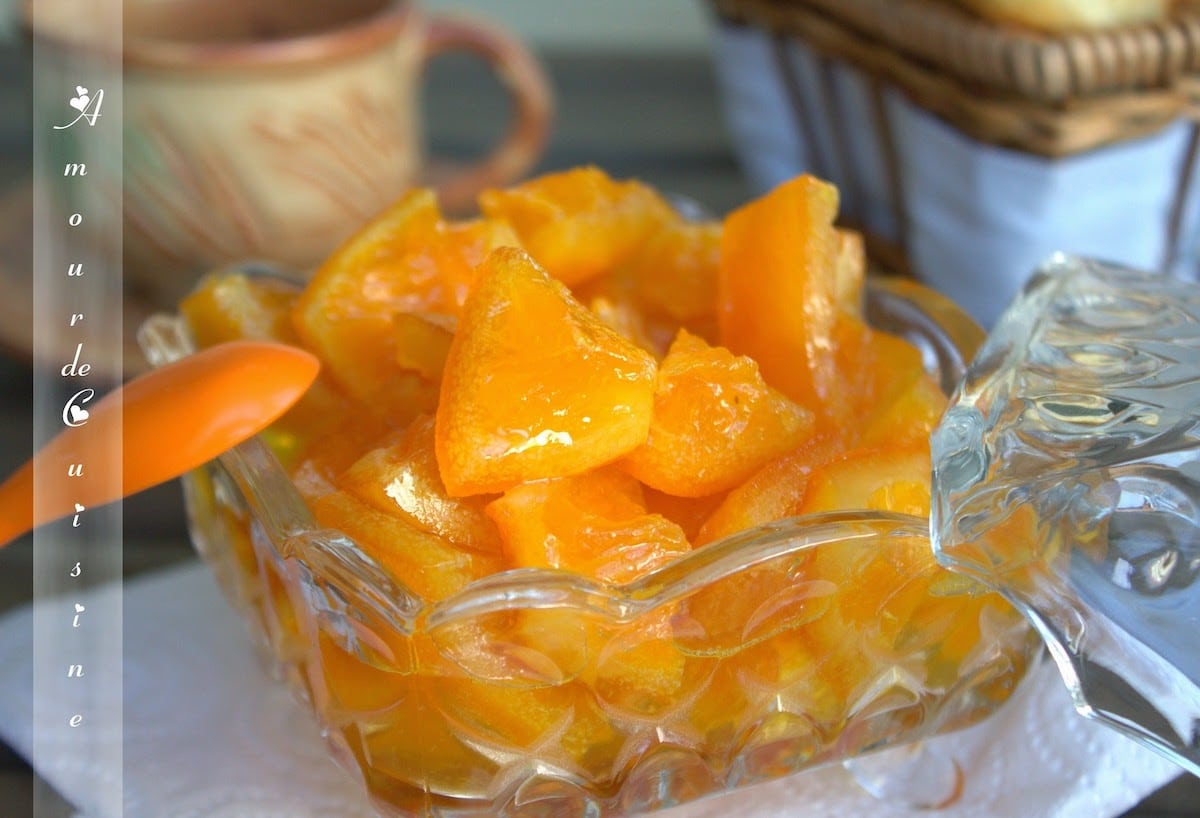
Ingredients for Homemade Orange Marmalade Without Bitterness
- 1 kg of fresh oranges – Preferably organic, as the peel is used. Sweet varieties reduce natural bitterness.
- Cooking water – After blanching, keep the last water as it’s free from bitterness and rich in flavor.
- Sugar (adjustable) – Measure equal parts oranges and cooking water, then use three-quarters of that total in sugar.
Example: 1 cup oranges → 1 cup cooking water → ¾ cup sugar.
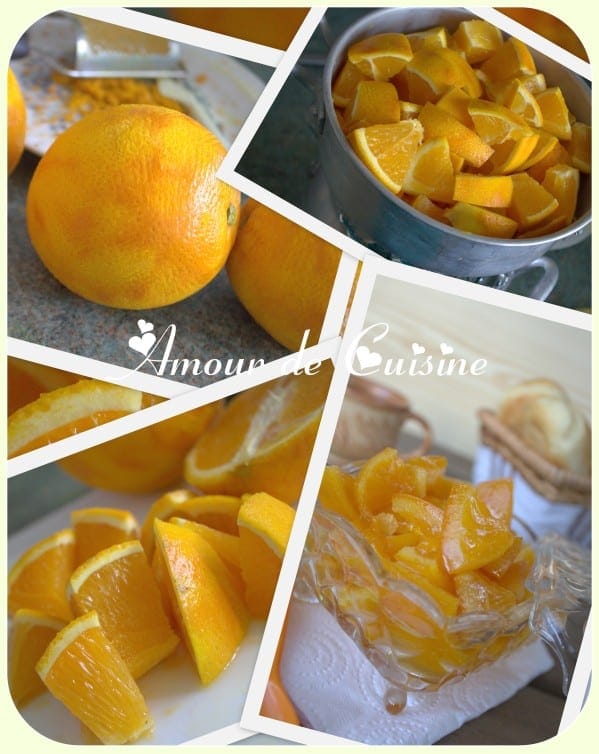
Step-by-Step Instructions to Make Sweet, Non-Bitter Orange Marmalade
- Prepare the oranges the day before : Gently remove the zest without cutting too deeply into the bitter white pith.
- Blanch to remove bitterness : Place the oranges in hot water with 1 tablespoon of sugar, let sit for 30 minutes, then change the water. Repeat 7–8 times.
- Cut into cubes : Drain the oranges, then slice into small cubes for a chunky texture.
- Steam the fruit : Steam the cubes in a steamer basket for 20 minutes. Replace the water and repeat a second steaming. Two rounds are usually enough, but a third can be done if the peel is still firm.
- Measure & prepare the syrup : Measure the fruit and cooking water, then calculate ¾ of that quantity in sugar. Heat water and sugar in a heavy saucepan until thick like honey.
- Cook the marmalade : Add the orange cubes to the syrup, reduce the heat, and simmer until it thickens. Test by placing a drop on a cold plate: if it gels, it’s ready.
- Fill the jars : Pour the hot marmalade into sterilized jars, seal tightly, and invert until cool to create a vacuum.
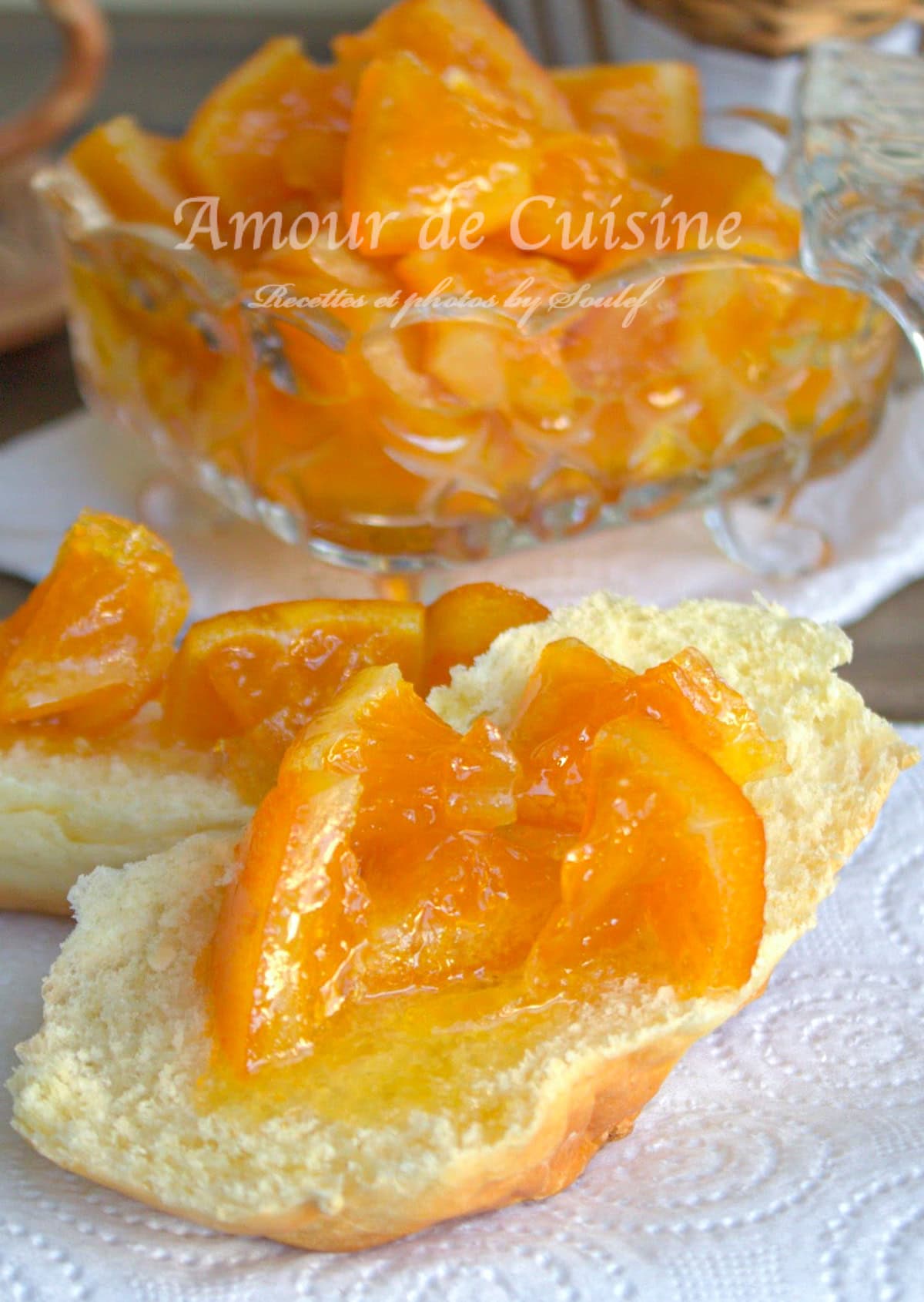
Grandma’s Secret for Sweet and Perfect Orange Marmalade
Preparing the Oranges with Care
My grandmother’s secret was to gently scrape the peel off the oranges, just enough to reveal a thin layer of the white pith while keeping the skin intact. This precise step helped balance the final flavour.
The Hot Bath to Remove Bitterness
She would then bring water to a boil with a spoonful of sugar, immerse the whole oranges, and immediately turn off the heat. The fruit soaked for about 30 minutes, sometimes longer depending on thickness. This process was repeated 7 to 8 times, or more if the pith was especially thick. Thanks to this patient ritual, all bitterness was drawn out.
A Two-Day Process
She always began this preparation early in the morning and only made the marmalade the following day. The rest period improved the texture and gave the marmalade a rounder, smoother taste.
Steaming the Oranges
Once drained, the oranges were cut into cubes and steamed in a couscoussier (or steamer) for about 20 minutes. The water beneath was changed, and the steaming repeated a second time. Two rounds usually produced tender fruit, though a third could be done for firmer peels.
Extra Tips
- Play with flavors: add a vanilla pod or cinnamon stick to the cooking water for a subtle aroma.
- Reduce the sugar: swap part of it for honey to add a softer, floral note.
- Test tenderness: prick a piece of orange with the tip of a knife, it should glide in easily.
- Plan ahead: start the day before to lighten the workload on cooking day.
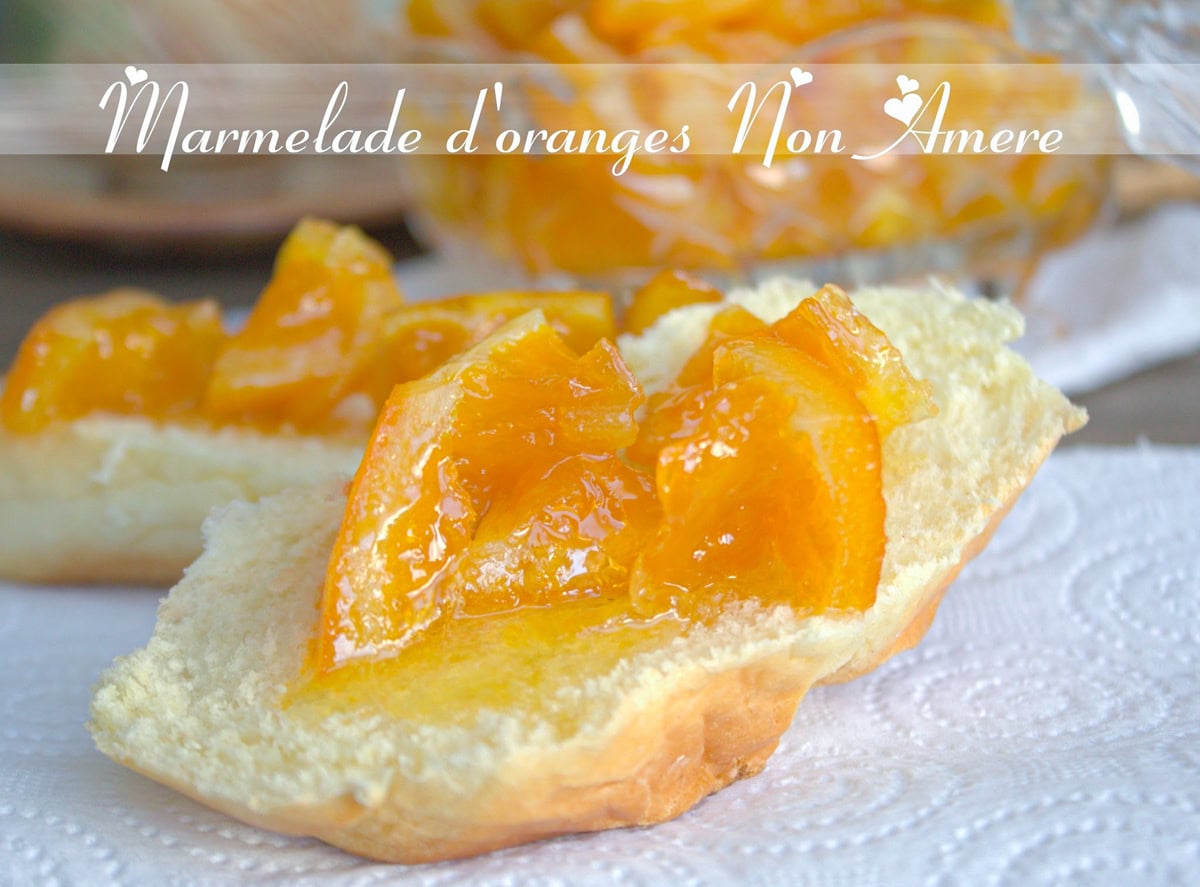
Variations & Substitutions for Homemade Orange Marmalade
One of the joys of making marmalade at home is how adaptable it can be. By adjusting the sweetness, adding spices, or playing with texture, you can create a version that perfectly matches your taste and occasion.
Less Sugar / Natural Sweeteners
- Honey for a floral touch – Replace part of the sugar with honey to bring a softer, more aromatic flavor. Honey also pairs beautifully with the citrus notes.
- Cane sugar for depth – Using raw cane sugar, muscovado, or demerara adds caramel undertones that make the marmalade richer and more complex.
- Boosting pectin naturally – If you prefer less sugar, add natural pectin from apples or lemon juice. This helps the marmalade set while keeping sweetness in check.
Spices & Citrus Twists
- Warm spices – A cinnamon stick, fresh ginger, or vanilla pod can transform the flavor profile, making it cozy and festive.
- Mixing citrus – Try combining oranges with lemon for extra tang, mandarins for sweetness, or blood oranges for a striking color and a more complex taste.
- Herbal infusions – For something different, steep rosemary or thyme in the cooking syrup for a subtle aromatic twist.
Texture Options
- Smooth marmalade – Lightly blend the fruit before cooking if you prefer a silky spread that’s easy to spread on bread or pastries.
- Chunky marmalade – Keep the cubes intact for rustic, bite-sized pieces of candied peel that add a satisfying chew.
- Balanced texture – Blend half the mixture and leave the rest in cubes for a perfect balance of smoothness and fruity chunks.
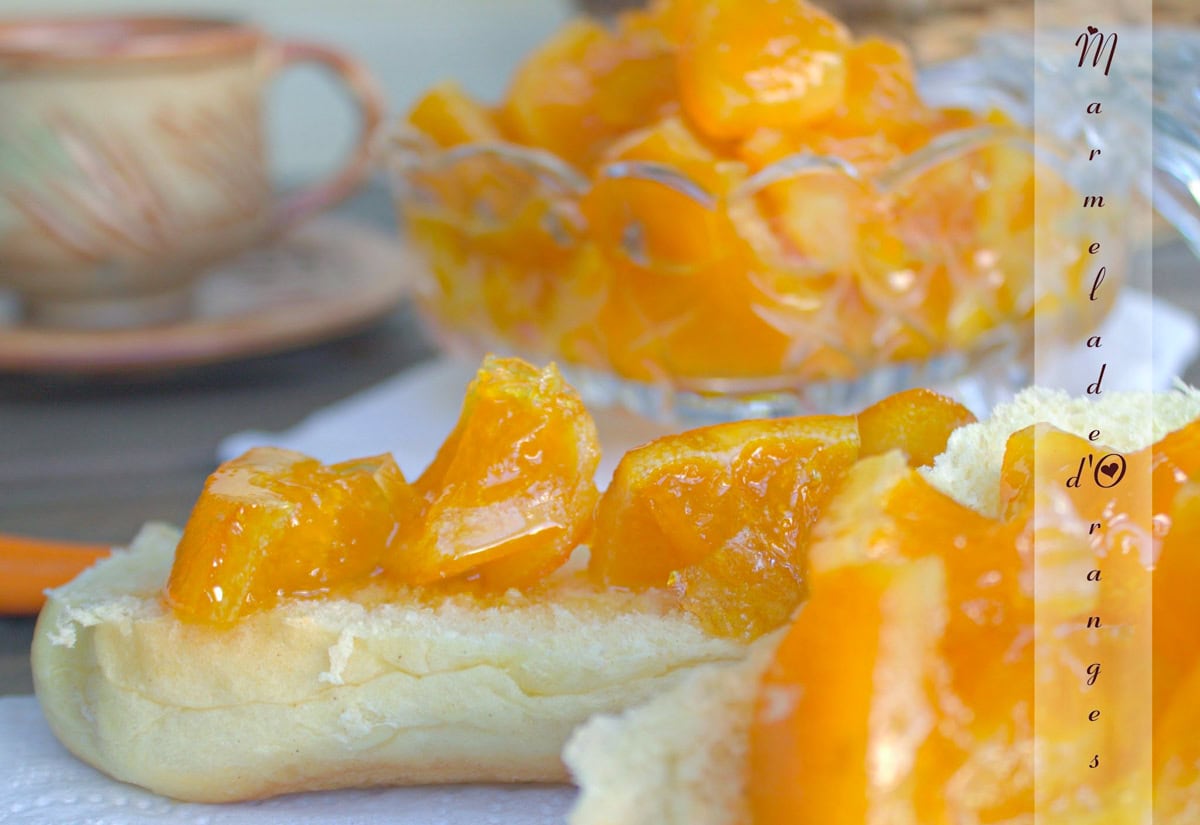
Frequently Asked Questions About Orange Marmalade
– Why should the water in the steamer be changed?
During steaming, the bitterness from the orange peel is released into the water. By changing it regularly, you end up with a much sweeter marmalade.
– Do I need to use organic oranges?
It’s highly recommended. Since the peel is used in the recipe, organic, untreated oranges are safer and free from pesticides.
– Can sugar be replaced with other ingredients?
Yes. You can substitute with honey, raw cane sugar, or natural sweeteners. Just keep in mind that this may affect the texture and shelf life of the marmalade.
– How long does homemade orange marmalade keep?
If properly cooked and stored in sterilized, airtight jars, it will last several months at room temperature and even longer in the refrigerator.
– What’s the difference between jam and marmalade?
Marmalade is made specifically with citrus fruits and usually includes pieces of peel. Jam, on the other hand, can be made with any type of fruit.
– Can I flavor the marmalade with other ingredients?
Absolutely, and it’s delicious! Try adding cinnamon, ginger, vanilla, or zest from lemon or blood orange for unique flavor variations.
– Why is my marmalade still runny?
This usually happens due to a lack of pectin, too short a cooking time, or an imbalance between sugar and water. Extending the cooking time often solves the issue.
– Can orange marmalade be frozen?
Yes, it freezes very well if placed in airtight containers, which helps extend its shelf life.
– Why should the jars be turned upside down after filling?
Turning them creates a vacuum seal inside the jar, which ensures better sterilization and prevents bacteria from developing.
Other conserve recipes to try
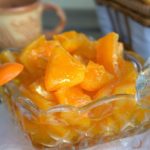
Easy Orange Marmalade Without Bitterness: Foolproof Method
- Total Time: 2 hours 45 minutes
- Yield: 5 to 6 jars of 250 g 1x
Description
Making orange marmalade without bitterness becomes an easy delight with this simple recipe. Perfect for breakfast or desserts, it highlights the natural sweetness of oranges while removing their usual bitterness.
Ingredients
- 1 kg Oranges
- sugar
- water
Instructions
- The day before cooking, carefully remove the zest from the oranges without cutting into the white pith.
- In a large pot, add hot water and 1 tablespoon of sugar, then submerge the oranges. Let them sit for about 30 minutes, then change the water.
- Repeat this process (hot water + sugar) several times to reduce the bitterness of the orange peel (about 8 times or more).
- The next morning, remove the oranges from the water and cut them into cubes on the work surface.
- Bring water to a boil in the bottom of a couscoussier (or steamer) and place the orange cubes in the top section.
- Steam the oranges for about 20 minutes.
- Replace the water in the bottom of the couscoussier and repeat the steaming process.
- Once the orange cubes are tender, remove them and keep the water from the bottom of the couscoussier.
- Measure the amount of cooked oranges.
- Measure the same amount of the reserved cooking water.
- Then measure three-quarters of that quantity in sugar.
Example: 1 cup oranges → 1 cup cooking water → ¾ cup sugar. - In a heavy-bottomed pot, combine the water and sugar. Heat on high until the mixture thickens into a syrup with the consistency of thick honey.
- Add the orange cubes to the syrup, lower the heat, and let it simmer until the marmalade is ready.
- Test by dropping a little syrup onto a cold plate: if it sets, the marmalade is done.
- Pour the hot marmalade into sterilized jars using a ladle, seal them, and invert the jars. Let them cool upside down until the next day.
- Prep Time: 2 hours
- Cook Time: 45 min
- Category: conserve
Nutrition
- Serving Size: 100 g
- Calories: 260 kcal
